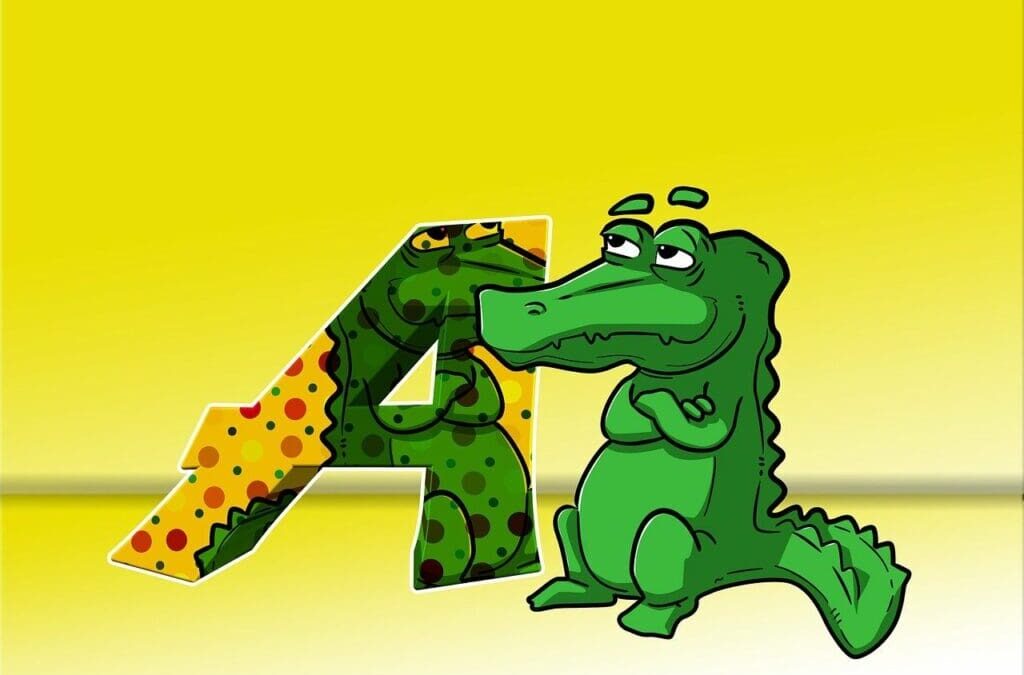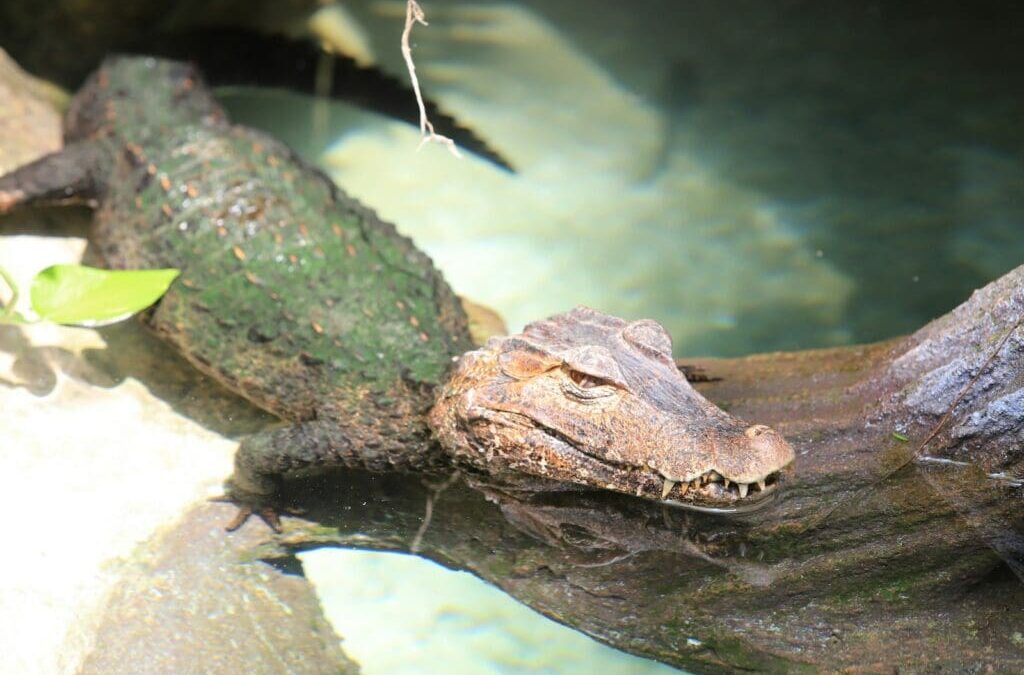
by pixeladmin7 | Apr 29, 2024 | Educational Resources, Fun Zoo Activities & Crafts, general
Image by Gerd Altmann from Pixabay
The Ultimate Animal Alphabet Adventure for Kids
Exploring the animal kingdom through the alphabet is a delightful way for children to combine learning letters with a fascination for wildlife. As little ones journey from A to Z, they encounter a world of animals, each one associated with a different letter, enhancing both their alphabetic understanding and their knowledge of animal classification. Visits to the zoo become interactive lessons where each exhibit offers an exciting opportunity to identify creatures and match them to the corresponding letter of the alphabet.
Incorporated into preschool, kindergarten, and homeschool curriculums, an alphabet guide of animals makes for an educational adventure. It’s more than just memorizing the order of letters; it’s about bringing each character to life with an example from the natural world. As a practical educational tool, such a guide serves to entice curiosity in young minds while reinforcing letter recognition in a fun and engaging manner.
The joy of learning is greatly amplified when children are given the chance to relate abstract concepts like letters with real-world examples, like animals at the zoo. This method supports an interactive mode of education where kids can touch, hear, and even smell the subjects of their lessons, solidifying the connection between the academic and the tangible. It paves the way for a deeper understanding and a love for learning that extends beyond the classroom.
Exploring the Alphabet with Zoo Animals
Learning the alphabet is a crucial step for kids, and pairing each letter with a lovable zoo animal can make this process both engaging and educational. By associating letters with animals, children can improve their letter recognition skills and acquire new knowledge about the animal kingdom.
Letter Recognition and Animal Names
Educators and parents leverage the intrigue that zoo animals inspire to teach the letters of the alphabet. From A for Alligator to Z for Zebra, each letter is paired with an animal, blending phonics and fun. Color by letter worksheets further enhance this learning experience, allowing kids to associate letters with colors and animals in a creative way.
A: Alligator
B: Bear
C: Cat
D: Dog
E: Elephant
F: Flamingo
… and so on, through the alphabet.
Using such educational tools helps solidify letter recognition and lays the groundwork for early reading skills. Children delight in shouting out the names of zoo animals as they learn their ABCs, turning a reading exercise into an exciting game.
Fun Facts About Zoo Animals from A to Z
Each animal in the alphabet brings an opportunity to share fun facts that capture a child’s imagination. For example, children learn that alligators have been around since the age of the dinosaurs, bears have an excellent sense of smell, and giraffes have long necks that allow them to reach the highest leaves.
Giraffe: The tallest mammal on Earth.
Horse: Known for their speed and strength.
Iguana: A lizard with a row of spines along its back.
Jellyfish: No brain or heart, but can still sting!
Kangaroo: Hops on powerful hind legs and carries babies in a pouch.
Lemur: Has big, expressive eyes and a long, striped tail.
In sharing these facts, children’s natural curiosity is spiked, and the learning experience extends beyond just the alphabet to also include insights into the animal’s lifestyles and habitats. Such a method ensures that the educational journey is as thrilling as a day at the zoo, helping kids remember not only the letters but also the distinctive features of each zoo animal.
Creative Learning Activities
Incorporating crafts and coloring, alongside engaging literacy centers, can greatly enhance children’s learning about zoo animals. These activities are designed to be both informative and enjoyable for preschoolers, kindergarteners, and homeschool groups.
Crafts and Coloring with Zoo Themes
Using zoo color by letter worksheets, educators can introduce preschoolers to both the vibrant world of colors and the fundamentals of letter recognition. Simple crafts, such as making zoo animal masks from cardstock or creating animal figures from recyclable materials, can stimulate creativity and can be laminated for durability. Black and white coloring sheets not only entertain but also help children practice fine motor skills as they stay within the lines.
Materials needed for crafts:
Cardstock
Color pencils/Crayons
Laminating sheets
Suggested activities:
Zoo Animal Masks
Zoo Themed Coloring Sheets
Engaging Literacy Centers
For children in a classroom or homeschool setting, literacy centers that focus on zoo animals can tie together reading, phonics, and the excitement of learning new words. By using puzzles featuring different zoo animals, educators can facilitate both phonics practice and letter recognition in an engaging way. Kindergarteners can match animal pictures to their corresponding names, turning a simple matching game into a reading exercise.
Components of literacy centers:
Puzzles with animal images and names
Zoo animal picture cards with names
Activities to reinforce skills:
Animal Name Matching
Phonics Games with Zoo Animals
Integrating Zoo Adventures in Education
Zoo adventures can be a fundamental component of educational curriculum, providing interactive and engaging learning experiences. They merge the thrill of encountering animals with structured lessons that reinforce literacy and comprehension for children at different developmental stages, from preschool to kindergarten.
Interactive Zoo Animal Lessons
Incorporating zoo-themed videos into the classroom can instigate children’s curiosity about the animal kingdom. The Alphabet Zoo Adventure uses the allure of animals to teach the alphabet, turning a routine reading lesson into a lively zoo journey. Utilizing such resources encourages active learning and participation among children, making it a valuable asset for educators.
For Preschoolers:
Animal Sounds: Match letters with the corresponding animal sounds.
Animal Movements: Introduce physical activity by mimicking animal movements.
For Kindergarteners:
Habitat Discussion: Link animals to their habitats and foster environmental awareness.
Conservation Talk: Engage in simple dialogues about protecting animal species.
Zoo and Animal Books for Kids
Books like “Sesame Street: Elmo and Zoe’s A-to-Zoo Adventure” invite young readers to explore alphabets within the context of their favorite furry characters’ zoo experience. Such tailor-made zoo and animal books for kids effectively bridge reading fundamentals with their innate interest in animals, enhancing their educational journey.
Book Suggestions:
Zoo-phonics Parent Kit: Enable parents to participate in their child’s literacy development.
Alphabet Zoo Adventure: A to Z Animal Names!: Introduce toddlers to letters and animals through engaging illustrations and stories.
Introducing children to the wonders of the animal kingdom through interactive lessons and reading supports the educational focus of early childhood learning environments. These resources not only align with educational standards for reading and literacy but also foster a love for learning and a greater appreciation of wildlife.

by pixeladmin7 | Mar 11, 2024 | Educational Resources, general
Photo by Aldrin Rachman Pradana on Unsplash
Unveiling the Wonders of Wildlife Education
Zoology, the scientific study of the animal kingdom, offers a fascinating window into the complexity of animal behavior and the rich tapestry of life that populates our natural world. Whether it’s a casual interest or a serious pursuit, understanding the intricate lives of animals enhances our appreciation for the diversity and adaptability of wildlife. For enthusiasts eager to expand their knowledge, educational series tailored to the unique field of zoology provide a unique opportunity to explore various species and their environments, opening up the world of wildlife science in an engaging and enriching way.
Wildlife education not only illuminates the workings of different ecosystems but also introduces aspiring zoologists and passionate wildlife observers to the critical role conservation plays in sustaining biodiversity. Through curated lessons that integrate hands-on activities with immersive talks, individuals can learn about the crucial research methods that allow scientists to observe and protect animals in their natural habitats and under human care. This foundational understanding is key to fostering stewardship of our planet and promoting a harmonious coexistence with the multitude of species that share our world.
Engaging with educational programs in zoology enhances the ability to recognize and interpret various animal behaviors, providing a deeper comprehension of the connections within ecosystems. Learning from experienced zoologists, enthusiasts gain insight into the day-to-day activities of wildlife professionals and the challenges they face. By delving into the study of animals, participants draw closer to the natural world, equipping themselves with the knowledge to advocate for wildlife and contribute to its preservation for future generations.
Exploring the Animal Kingdom
In the realm of the animal kingdom, there’s a rich tapestry of life that exhibits an extraordinary amount of diversity and complexity. From the depths of the oceans to the canopies of rainforests, a vast array of creatures contribute to the vitality of ecosystems around the globe.
Classifying Diverse Life Forms
The classification of animals is a fundamental aspect of zoology, providing an organized system to understand and study the immense variety of life. Kingdom Animalia is divided into numerous phyla, extending further into classes such as mammals, birds, fishes, reptiles, amphibians, and insects. Each class is then split into orders, families, genera, and species. For instance, amphibians are known for their life cycles in both aquatic and terrestrial environments, and reptiles are distinguished by their scaly skin and typically lay shelled eggs.
Observation and Ethology
Ethology, the study of animal behavior, is crucial for appreciating how species interact with each other and their environments. By observing animals, whether in the wild, in a zoo, or through educational series like Wildlife Wonders, one can learn about the feeding habits of whales, the migratory patterns of birds, or the intricate social structures of insects. These observations help to form a complete picture of how life adapts and evolves.
Habitats and Ecosystems
Habitats provide the necessary conditions for survival, such as food, water, and shelter, dictating which life forms can thrive in them. Ecosystems encompass complex interactions between organisms (like fish, reptiles, mammals, and amphibians) and their environments, from tropical rainforests bursting with biodiversity to the stark beauty of desert landscapes. Biodiversity within these ecosystems is critical; a wider variety of species ensures healthier and more resilient environments. Understanding the symbiotic relationships within ecosystems, such as those found in Disney’s Animal Kingdom, is key to the conservation of wildlife.
Conservation and Ethics
In the quest to preserve Earth’s biodiversity, the intersection of conservation and ethics plays a pivotal role. Ensuring animal welfare and adhering to ethical standards forms the backbone of modern conservation practices.
The Role of Zoos and Aquariums
Zoos and aquariums serve as vital centers for wildlife conservation and education. They are pivotal in protecting endangered species from extinction by providing them with safe habitats and participating in breeding programs. These institutions also support in-situ conservation efforts and research which is crucial for the survival of species in the wild. For instance, efforts like the Species Survival Plans are critical in maintaining healthy, genetically diverse animal populations.
Wildlife Conservation Efforts
Conservationists work tirelessly to safeguard various habitats and species, particularly those that are endangered. This may include protecting natural habitats from deforestation or pollution, advocating for laws to prevent illegal poaching, and restoring ecosystems that have been damaged. Effective conservation often requires a blend of fieldwork, policymaking, and community engagement to achieve long-term sustainability. Entities like the World Wildlife Fund are known for their global wildlife conservation efforts.
Ethnobiology and Ethical Considerations
When dealing with wildlife conservation, ethical considerations must be taken into account. Ethnobiology examines the way different cultures interact with and impact their local ecosystems. It’s important for conservation efforts to respect the knowledge and traditions of indigenous peoples and local communities. Ethical considerations also involve ensuring that sanctuaries and rehabilitation centers uphold high standards of animal welfare, treating all creatures with compassion and respect.
Interactive Education and Careers
For those passionate about zoology and wildlife biology, interactive education and career paths offer a wealth of opportunities. This section provides insights into valuable educational resources and potential career trajectories within this vibrant field.
Educational Resources for Aspiring Zoologists
Lesson Plans and Webinars: An array of lesson plans aligned with National Science Education Standards can be found through the National Wildlife Federation. These resources cater to high school students interested in life science and wildlife biology, providing a foundation for aspiring zoologists.
Zoology for Kids: Various organizations offer educational series and activities aimed at younger audiences. These include interactive experiences that engage children with the fascinating lives of animals, both in zoos and in natural habitats, nurturing a love for conservation from a tender age.
Career Paths in Zoology and Wildlife Biology
University Courses: For those seeking formal education, numerous online courses cover wildlife management, botany, zoology, ecology, and more, helping students prepare for careers as scientists, marine biologists, or even zoo curators.
Career Opportunities:
Zookeepers: They are the hands-on heroes in zoos ensuring animal care, often requiring a degree in a related field.
Wildlife Biologists and Conservationists: One may work in the field, conducting research and working towards the conservation of species.
Specialized Scientists: A passion for particular creatures can lead to careers as an entomologist or herpetologist, among others.
Hands-On Experiences:
Internships: These provide real-world experience, an asset for future veterinarians, wildlife biologists, or conservationists.
Volunteer Work: Engaging in volunteer work at local zoos or with conservation groups can be a significant step toward a fulfilling career.
Engaging with Wildlife Beyond the Classroom
Diving into the world of wildlife outside of traditional learning spaces provides enthusiasts with the chance to solidify their understanding through direct engagement and multimedia resources.
Hands-on Experience and Fieldwork
For those looking to get hands-on experience in zoo-ology, participating in fieldwork can be incredibly rewarding. They get to apply classroom knowledge to real-world scenarios, such as tracking animal behavior or contributing to ongoing research. Programs often offer opportunities for observation and scientific data collection, which not only aid personal education but also contribute to conservation efforts. Activities might range from guided nature walks to more structured internships with zoological parks or wildlife reserves.
Activities to consider:
Guided animal tracking
Habitat restoration projects
Wildlife surveys and census
Multimedia Learning: Videos and Interactive Media
In today’s digital age, there’s a wealth of multimedia learning tools at one’s fingertips. Videos can provide a virtual window into habitats and animal behaviors not easily witnessed firsthand. Furthermore, interactive media such as games and activities on platforms like the National Wildlife Federation’s educational resources bring fun into learning, allowing one to test their knowledge in a playful manner. Scientific illustration and photographs of animals also offer the chance to study animals in detail, which can be especially beneficial for visual learners. These nonfiction resources can be found in a multitude of formats, from online webinars to educational documentaries like those highlighted by BrightChamps.
Media to explore:
Online documentaries about wildlife
Educative webinars and virtual tours
Interactive quizzes and wildlife-themed games





